

British Naval Brigades in Antwerp


(see also : Fighting in Flanders 4)
By the time British units arrived, it was too late to save Antwerp from being taken by the Germans. Nevertheless, some 8000 to 9000 men were sent in the hope of holding the line until more Allied reinforcements could reach the city. With its impressive triple circle of forts, Antwerp was considered to be an almost impregnable stronghold. It was therefore quite conceivable that with sufficient numbers of troops, Antwerp could have been held against German attacks, much like what happened at Verdun and Ypres.
But at what cost ? Instead of getting through the Great War relatively undamaged, Antwerp might have become a ghost town, shelled, bombed and burned to the ground, a devastated waste-land of ruins and wreckage adorned with countless cemetaries of the dead.
Antwerp did not turn out to be the glimmering prize the German command had envisioned. The river Scheldt was closed to all military traffic by the neutral Netherlands and civilian shipping suffered from the British blockade. True, Antwerp was an important transporatation hub and industrial center but all in all it was not the conquered crown jewel in the German crown.
At the end of the war in 1918, Antwerp once again escaped destruction and devestation. The retreating Germans planned to use the fortified zone of Antwerp as a strongpoint against the Allied advance. There is no telling what damage might have been done but for the unexpected Armistice on November 11th.
The coming of British Naval units to Antwerp was heralded with great fanfare and was extensively covered in the media. Here is a collection of photos that appeared in many news magazines, both Allied, Neutral and German.
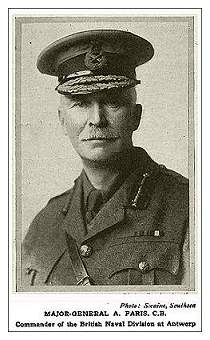
Major-General Paris. Commander of the British Naval Division at Antwerp
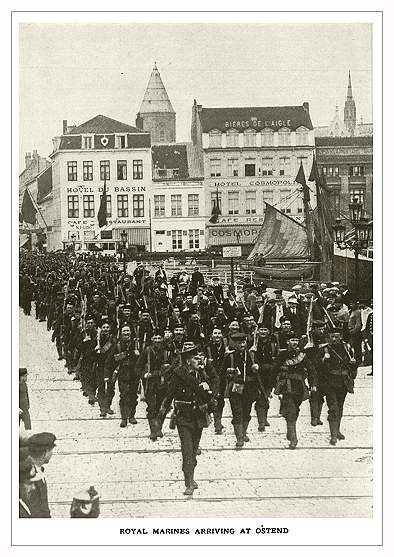
Disembarking at Ostend
“The English had arrived! Antwerp was full of them! Oh, there could be no mistake; he knew the uniforms, and they were everywhere, thousands and thousands of them - in short, the British army! It was, perhaps, the only bit of good news that we had had since the war began, and it was the last we were to hear for a long time. And all day we lived in the pleasurable excitement of the news, not daring to mention it, wondering if the Germans knew, and almost every minute expecting some great event to be born of it.”
From ‘Belgium Under the German Occupation, A Personal Narrative’ (1919) by Brand Whitlock, US Minister in Belgium during the Great War
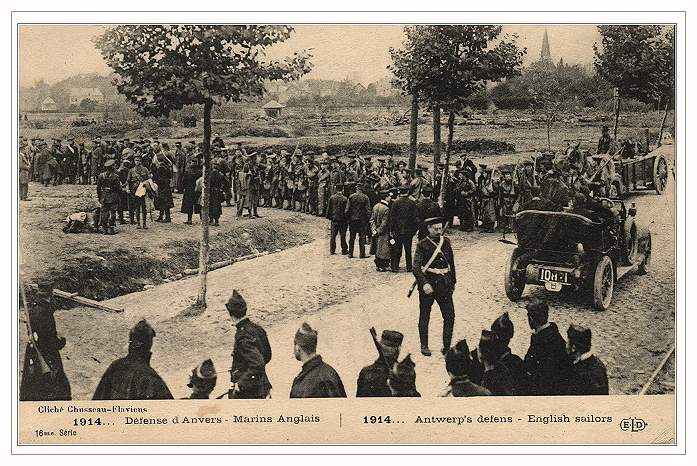
from a postcard : British marines on the outskirts of Antwerp. Note the tower of the cathedral in the distance. Belgian soldiers look on while a car with civilians (newsreporters ?) passes by. It would appear that the car is the same one in the following photograph, which could indicate that there were indeed reporters following the British troops. During the siege of the city, all motor vehicles were requisitioned by the military authorities so it is hardly conceivable that the motor car in the photograph contained civilians out for a ride.
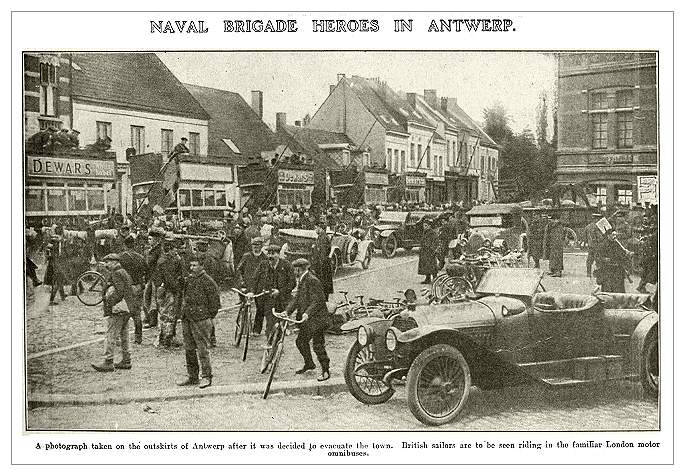
"On Monday and Tuesday the balance of the British expeditionary force, consisting of between five and six thousand men of the Volunteer Naval Reserve, arrived from the coast, their ammunition and supplies being brought by road, via Bruges and Ghent, in London motor-buses. When this procession of lumbering vehicles, placarded with advertisements of teas, tobaccos, whiskies, and current theatrical attractions and bearing the signs " Bank," " Holborn," "Piccadilly," " Shepherd's Bush," " Strand," rumbled through the streets of Antwerp, the populace went mad. The British had come at last ! The city was saved ! Vive les Anglais! Vive Tommy Atkins!"
(from 'Fighting in Flanders' by American journalist E.Alexander Powell)

An armourerd car heads the procession into the city.
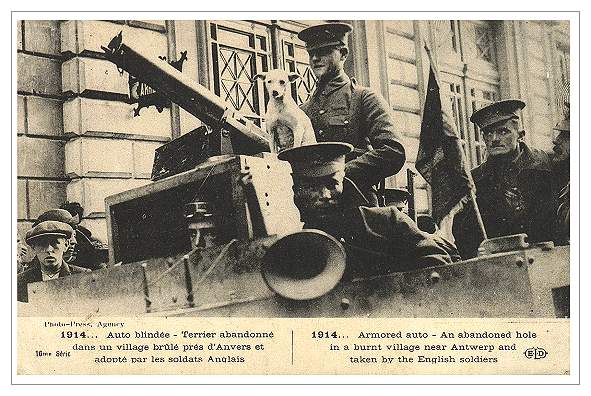
Postcard of an armoured car riding into Antwerp with a stray dog rescued from a burnt out village.
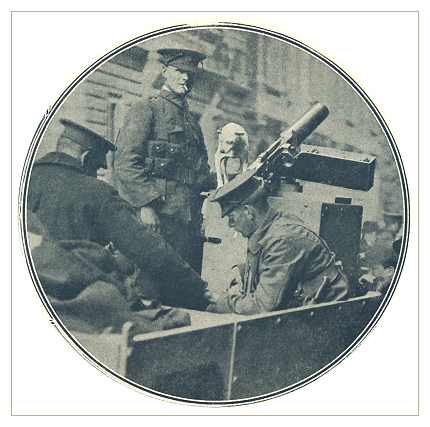
The same armoured car, soldier and dog. This time from a photo in a newsmagazine.

British armoured cars parked on the Antwerp quay, near the bridge of boats.
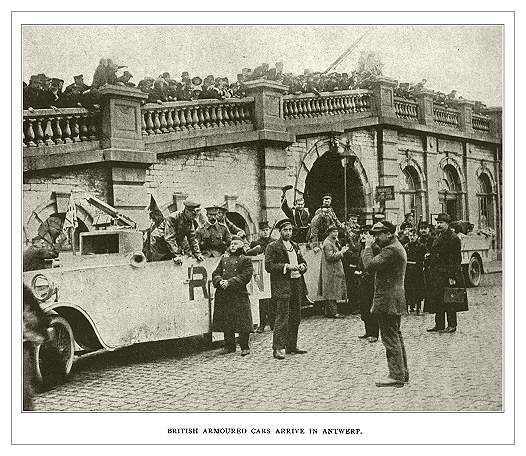
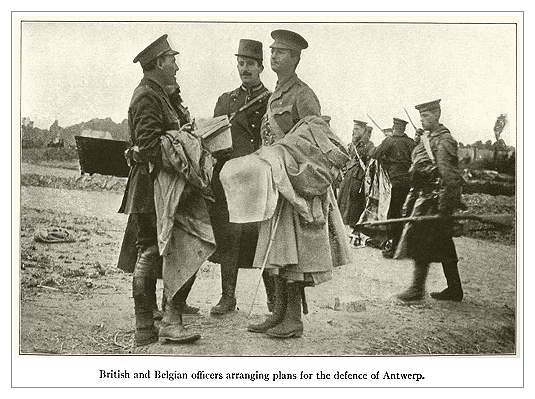
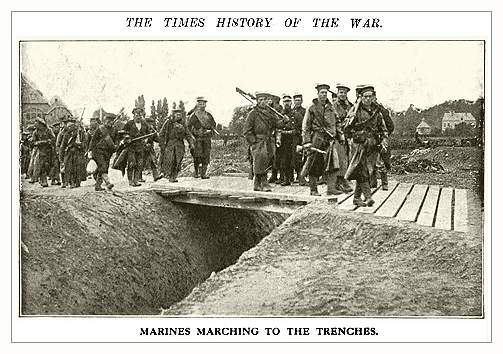
British soldiers march off to the trenches. These could be anywhere up to 20 kilometres outside of the city.
"I witnessed the detrainment of the naval brigades at Vieux Dieu and accompanied them to the trenches north of Lierre. As they tramped down the bordered, cobble-paved high road, we heard, for the first time in Belgium, the lilting refrain of that music-hall ballad which had become the English soldiers' marching song : Tipperary" (from 'Fighting in Flanders' by American journalist E.Alexander Powell)
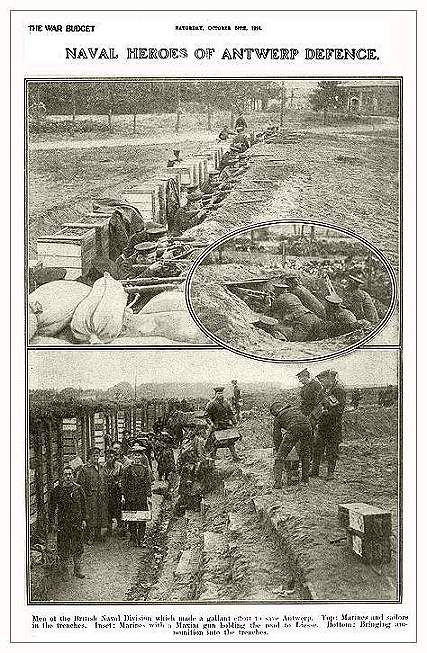
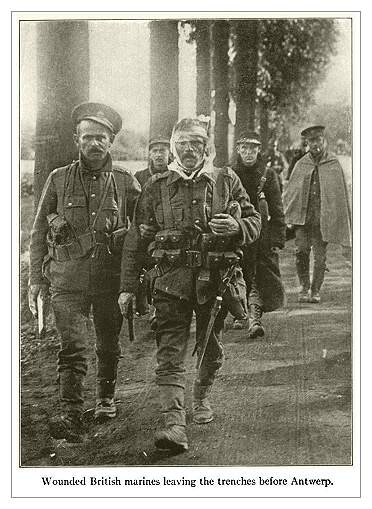
Bottom view : in the trenches around Lierre. In the topmost photograph one can make out part of one of the Antwerp forts
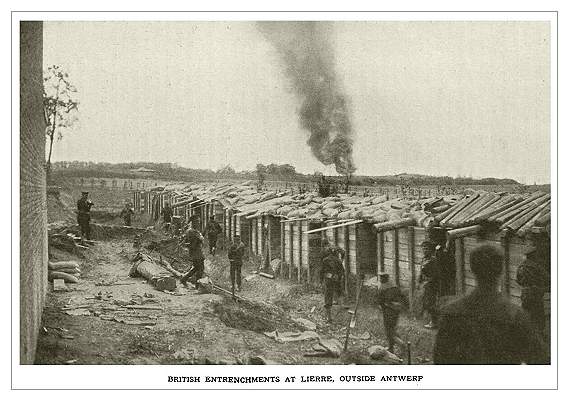
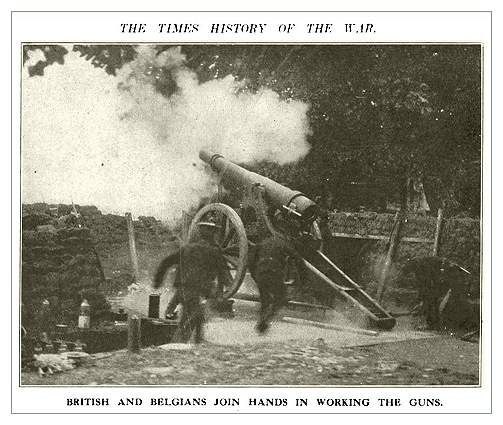
Firing an artillery piece inside one of the Antwerp forts. British troops took over the defence of several of the forts.